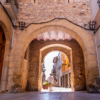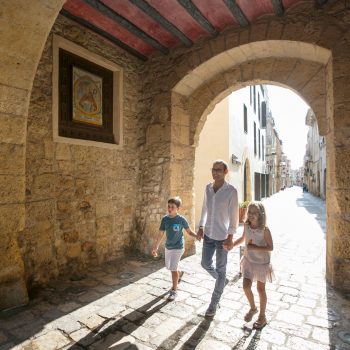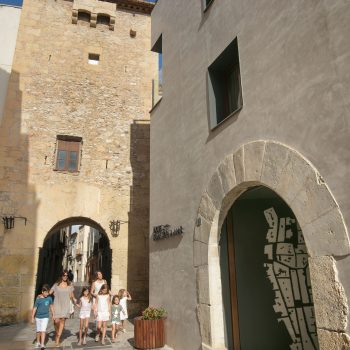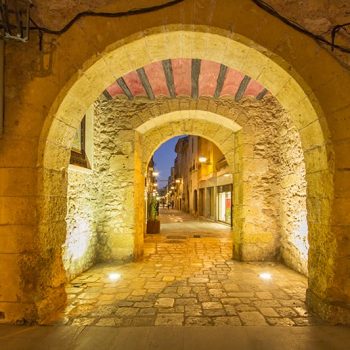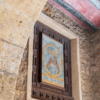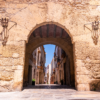The Portal de Sant Antoni is a gateway topped with a tower in the historic town centre of Vila-seca. Declared a Cultural Asset of National Interest.
The early walled enclosure located to the east of the present-day church and guarded by four watchtowers was not large enough to house or offer protection to all townspeople. A second walled perimeter was later built in the mid-fourteenth century that would be used for 400 years. The village had greater importance than the neighbouring regions and it was essential to defend it from looting and outside dangers.
The Portal de Sant Antoni is the only gateway regularly mentioned in ancient documents, and it still retains its appearance as a wall gateway into the second fortified perimeter of Vila-seca. The inside street was Carrer de la Mar (Sea Street) and the area outside the walled grounds towards the sea is called Raval de la Mar (sea district). Carrer dels Ferrers (Blacksmiths’ Street) leads toward the east, formerly Raval de la Presó (Prison Quarter) and to the northeast links to Sant Josep Street and the district bearing this same name.
Portal de Sant Antoni is one of the features included on the route to get to know the historic centre of Vila-seca via the heritage monuments with a QR code.
A bit of history
The former Vila-seca del Comú, which became Vila-seca de Solcina in 1525, occupied the heart of the current town centre. It ran from Portal de Sant Antoni to the south, to the Portal de l’Església (Church Gateway) and the Plaça de Voltes. Further, the thick fortified outside walls and some dozen defence towers protected a space large enough to safely house several hundred people. We should remember that Vila-seca was under siege by pirate attacks for some 300 years and it was the population hub and safe haven for neighbours from other more unprotected lands.
The Portal de Sant Antoni and Raval de la Mar were the starting points for the roads leading to the district’s most lively and bustling sites. You can still stroll along these paths today, Camí del Mas de la Sana, Camí de la Pineda, Camí de Cambrils and Camí de la Selva, the latter leading to the Port of Salou.
As befits a defensive gateway, Portal de Sant Antoni is a solid construction with ashlars—finely dressed masonry stones—at the base and stone and mortar at the top. The passageway is created from an arch on each side and a ceiling of beams. It measures 6.3 by 4.25 metres and its walls are 70 centimetres thick. You can see a machicolation still on the front outside façade, which simply means an opening through which stones or burning oil or water could be dropped on enemies during attacks.


